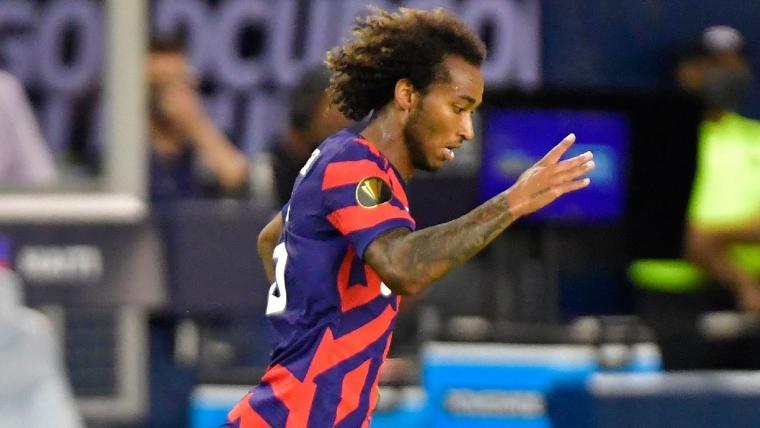In a 98-second video narrated by coach Marko Mitrovic, the U.S. Soccer Federation announced the 18-man men's team that will face hosts France on July 24 in Marseille.
The roster features some relatively familiar names such as Gianluca Busio, Jack McGlynn and Caleb Wiley.
US star Christian Pulisic was not selected.
How can America's best male athletes not become Olympians?
The odd thing about Olympic soccer is that the teams participating are not the national teams that represent their countries in tournaments like the Copa America, Euro 2024 or the World Cup, especially the World Cup.
Read more: Team USA leaves star player Diego Luna out of Paris squad
It has always been difficult for the Olympic soccer team to field the best male players as it is limited to amateur players. As professional soccer gained more attention and the FIFA World Cup became more popular, Olympic soccer became less important as superstars such as Brazil's Garrincha and Pele could no longer compete.
The amateur barrier eventually fell, and in 1984 the International Olympic Committee allowed professional men's football to play, but at that point FIFA didn't want a tournament to rival the popularity or prestige of its main source of revenue, the World Cup, so a formula was devised for Los Angeles that would mean that European and South American players who had played in the World Cup could not play, but countries from other continents could field their best teams.
In 1992, Barcelona came up with a more logical system: limiting participants to under 23, with three exceptions for “overage” players.
And that's where we are now.
Why isn't Gio Reyna competing in the Olympics?
Several regular members of the U.S. men's national team are age-qualified to compete in the Olympics. Midfielder Gio Reyna is 21, as are midfielder Yunus Musah and right back Joe Scully. Midfielder Johnny Cardoso is 22. Striker Folarin Balogun is 23 and will have the opportunity to play in France's Ligue 1, where he has played professionally, starting in 2022.
However, FIFA does not require clubs to release players for the Olympics.
The men's team faces two major continental tournaments this summer: Euro 2024 in Germany and the Copa America in the United States. Reina, Musa and other players were members of the U.S. Men's National Team that competed in the Copa America. The club soccer schedule in Europe's major leagues begins in mid-August, and many players are eager to get some rest before the start of a grueling nine months of competition.
But there are players who have interest in the Olympics but haven't played much in those tournaments. U.S. national team forward Haji Wright, 26, was a potential candidate for the over-age selection, but Coventry City of England reportedly rejected his participation.
France superstar Kylian Mbappe, who plays Spain in the Euro 2024 semi-final on Tuesday, had expressed an interest in playing for his country at the Olympics, but his new club Real Madrid opted not to let him go.
Why do American women perform at their best in the Olympics?
The U.S. Women's National Team, four-time Olympic soccer gold medalists, is led by top players such as Lindsey Horan, Sophia Smith, Mallory Swanson and Naomi Girma, and they will face a field studded with international superstars including Aitana Bommati, Salma Parraluelo and Alexia Puteras.
Of those players, only 20-year-old Parraluelo meets the U-23 criteria.
MORE: Full U.S. women's soccer roster | schedule
Women's football was introduced to the Olympics in Atlanta in 1996, just one year after FIFA agreed to give the top women's football tournament the name “World Cup,” and the Olympics have been integral to the growth of women's football ever since.
Some critics argue that women's soccer has “surpassed” the Olympics. How can a sport surpass the most important sporting event on the planet? Others argue that women's soccer should be an under-23 tournament, like men's soccer.
But women's football needs as many big stages as it can get in its ongoing battle to attract more audiences. The IOC limits women's football to 12 teams compared with 16 for men, a gap that remains untenable. But qualifying for the Olympics would mean a lot to women's football.

